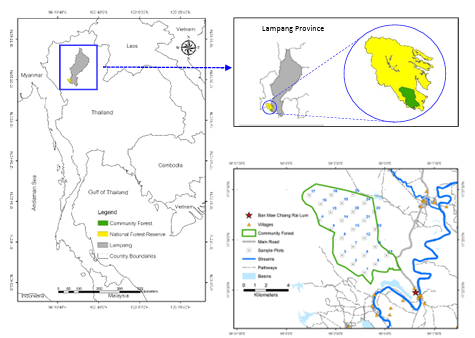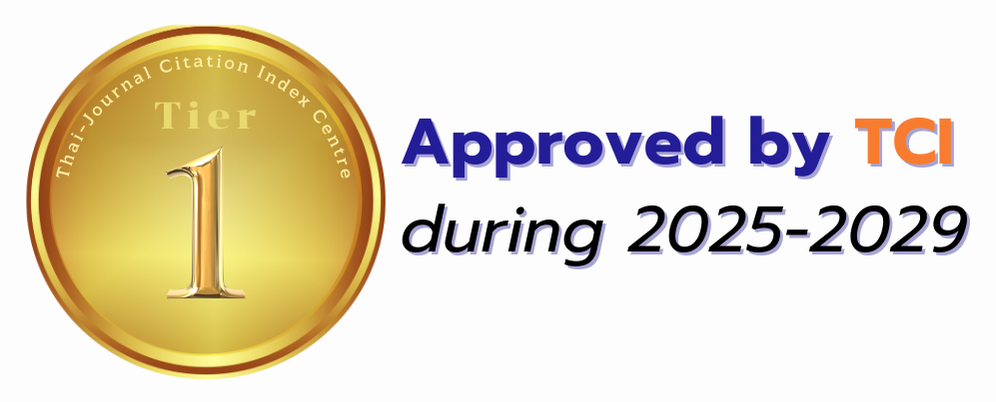Deciduous Forest Ecology and Community Forest Utilization in Ban Mae Chiang Rai Lum, Mae Phrik District, Lampang Province
Keywords:
Forest ecology, deciduous forests, forest minor products, community forest managementAbstract
Background and Objectives: The knowledge on forest ecosystems and their utilization can inform sustainable forest management. This study aimed to assess tree species diversity, non-timber forest product (NTFPs) utilization and contributing factors in the Ban Mae Chiang Rai Lum Community Forest in Mae Phrik District, Lampang Province.
Methodology: Twenty-five sample plots, 40 x 40 m (0.16 ha) were established to investigate tree species diversity in the community forest. Local NTFPs usage was identified and examined by responses to a questionnaire submitted to 159 households.
Main Results: The study area is exceptionally diverse as 197 species, 144 genera, and 62 plant families were recorded. The intermediate tree diversity based on Shannon-Wiener index (2.491 ± 0.281) was found. The study area was rich in NTFPs; 160 species for medicinal uses, 89 species for food, 37 species for chemical extractives, 32 for fuelwoods, and 12 species for fibers. However, 26 species are under threaten status based on the IUCN Red List. A majority of surveyed households (68.55%) depended on NTFPs. The value of the harvested NTFPs was US $60,358.62 or 6.35% of the annual community income. Female respondents, respondents under 60 years of age, married people, those whose principal occupation is farmer, and people who participated in community forest management at a very high level all correlated to higher NTFPs dependence.
Conclusion: The community forest’s diversity of plants supports the economic, social and environmental livelihoods of the surrounding communities. Understanding this can inform the effective management of forests and the promotion of sustainable conservation of their resources.
Downloads



.png)





